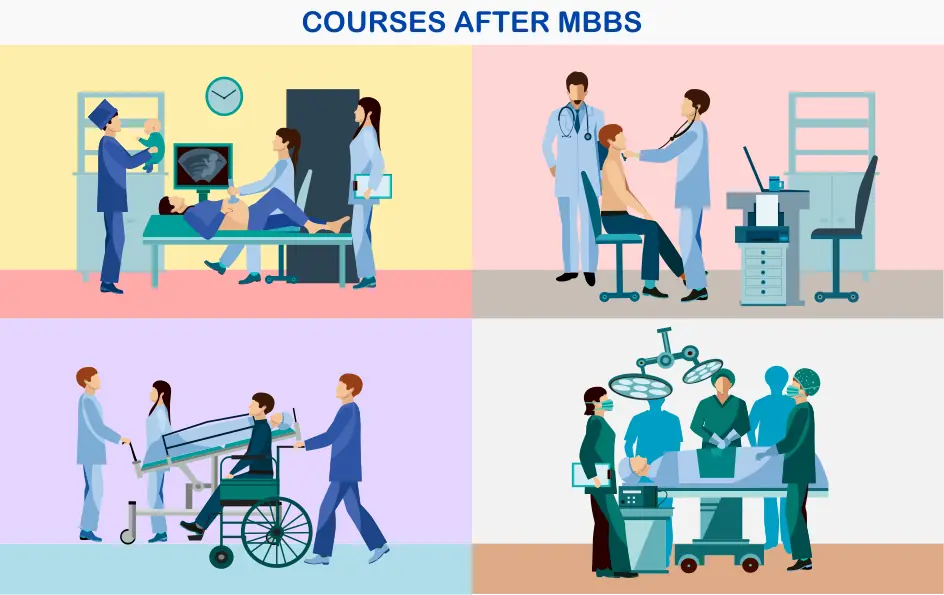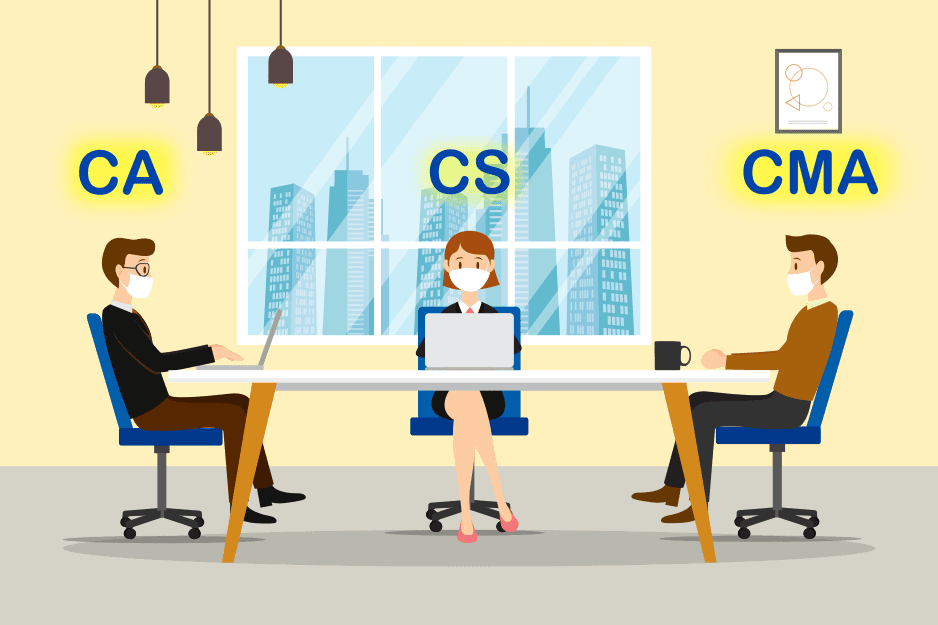The process of obtaining CMA (Cost and Management Accounting) certification is rewarding for those who are interested in advancing their career in management accounting and financial management. The Cost and Management Accountant designation is a globally recognized certification offered by the ICMAI (Institute of Management Accountants), previously known as ICWAI. The ICMAI ensures that the candidates have experience working in management accounting or financial management jobs for two years. The work experience can be obtained before or after the CMA final exam.
Like CA and CS, CMA is another prestigious accounting qualification in India. Cost and Management Accounting certification is achievable for professional who would like to advance in their careers and acquire more enhanced rank jobs in corporate finance, management accounting, and strategic positions in organizations. Hence, it is necessary to see CMA course details and answer the popular question of how to become a CMA.
What is CMA?
The name “Cost and Management Accounting” (CMA) is granted to candidates who meet the requirements for this qualification. It provides access to a great job in business accounting and makes the dream of having a successful business accounting career possible. The four knowledge pillars of the CMA course are financial reporting, strategy, regulatory framework, and management. Today’s students from any background, especially those with a desire to make a successful career in cost and management accounting, show great interest in the CMA course. We recommend you check the difference between cost accounting and management accounting for a better understanding.
What are the Benefits of Studying a CMA Course?
Indeed, getting a CMA degree comes with so many benefits that should make it an ideal course to pursue for anyone interested in financial management, cost accounting, and strategic planning. Here are some advantages to think about:
- Since the CMA certificate is internationally recognized, the qualified CMA can demonstrate their skills globally.
- The certificate ensures that students sit for management accounting careers by equipping them with specific expertise in different areas of finance and management.
- The Cost and Management Accountants are highly skilled and tend to get opportunities in various sectors, including manufacturing, service industries, finance, and consulting.
- Those individuals who have a CMA certificate have the right to receive a better-paid job compared to those who do not have this certification.
The job responsibility of a CMA
They are not restricted in their roles in maintaining financial records and preparing accounts. They undertake numerous responsibilities to make the organisation functional and to adhere to the strict provisions of sound financial management. Here are some of the Job responsibilities of a CMA:
1. Financial Planning and Analysis
Financial Planner prepares quantitative information in the form of balance sheets, income statements, and statements of cash flows to forecast performance, prepare budgets, and assess the impact of a tactical plan and any other financial implications. Their knowledge helps in directing the organisation on which way it should take, depending on the logical planning strategies and even in decision-making regarding the allocation of resources and balancing for potential volatile figures.
2. Cost Management
Overseeing costs in an organisation continues to be one of the main roles of a CMA. They are involved in the development of plans on how to minimise costs, assessment of cost distributions concerning the benefits, and development of regimes as to who bears what costs and does not influence quality.
3. Performance Management
The CMAs have the responsibility of assessing the relative performances of distinct subunits and the overall business. It is responsible for setting the performance indicators used to measure the performance of an organisation, preparing performance reports, and providing recommendations that could enhance organisational performance.
4. Risk Management
With the help of CMAs, potential threats resulting in financial damage that can impact an organisation can be assessed and identified. Briefly, they point out risks, and next, they engage in developing policies for managing these risks as well as implementing measures to contain them. CMA controls risks that are mostly associated with changes in the price of foreign currencies, credit risks, and risks associated with investment.
5. Strategic Management
Strategically, CMAs are involved in the formulation and implementation of business strategies on behalf of the organisation. They look at the market and provide market data, business intelligence, competitive intelligence, and other financial information, which helps in the execution of strategies. Their participation guarantees that fiscal factors are accommodated in the overall business plans.
How to become a CMA?
CMA after 12th: You can build your career in Cost and Management Accounting immediately after passing your 12th standard. Here are the steps you can follow and the opportunities available:
- Aim to complete your 12th grade.
- Register and appear for the CMA exam conducted twice in a year: June and December
- After passing the CMA foundation, register for the Intermediate course.
- Complete the skills training and then qualify for the intermediate exam
- Enrol in the CMA final course and complete the Industry Oriented Training Programme and Practical training for 3 years.
CMA after graduation: If you have already completed your graduation and are looking to become a Cost and Management Accountant (CMA), here is a detailed guide on the steps you need to follow:
- The prospective candidate should then attend a university to pursue a bachelor’s degree, which includes a B.Com, BMS, BBA, etc.
- To enrol, you need to register for the CMA Intermediate Course.
- Complete the skills training before going for the intermediate exam.
- Enrol in the CMA final course and complete the Industry Oriented Training Programme and Practical training for 3 years.
Following any of the paths mentioned above, you can become a Cost and Management Accountant.
Registration Process for the CMA course
After discussing the CMA course and its prerequisites, let’s check the registration process. Candidates can successfully register for the required level of the CMA course by going to the ICMAI official website. You can effectively register yourself by following the instructions listed below:
1) Go to the ICMAI’s official website and create a student account
2) Select online admission on the home page. Apply for the relevant course information online.
3) Complete the registration form by entering all the required information on a specific course.
4) Fill out the form and upload the pictures according to the guidelines.
5) Select your preferred payment method and pay the cost to finish the registration process.
Step 5: Print your form so you can refer to it later.
Eligibility for CMA
The following are the requirements for CMA’s eligibility:
Foundation Course
- A candidate must have graduated from an accredited board or institution with a Class 10 diploma or its equivalent.
- Passed the National Diploma in Commerce Examination held by the All India Council for Technical Education or any State Board of Technical Education under the said All India Council’s authority or the Diploma in Rural Service Examination held by the National Council of Higher Education. Successful completion of the 10+2 in a recognised Board recognised by the Central Government.
Intermediate Course
- Fulfilled the requirements for admission to the Institute of Cost Accountants of India’s Foundation Course and the Senior Secondary School Examination (10+2). The first part of the Institute/Foundation’s CAT Examination (Entry Level) Section I Assessment and Proficiency Level The Institute’s CAT Part II Examination.
- Passed 10+2 in addition to the Foundation of ICSI/Intermediate of ICAI, under whatever form it may be recognised.
Final Course
Passed the Institute’s Intermediate course and finished the 15 months of hands-on training.
CMA Course Details
The average duration of a CMA course is three to three and a half years. Now, let’s examine the three CMA course levels
CMA Foundation Level
The CMA Foundation is the initial level of the CMA course. The first step in becoming a cost and management accountant is for applicants to meet the requirements. After passing the 12th class qualifying exams, you can apply for the foundation course, admission can be done 4 months before the exam. The foundation course has 4 papers of 100 marks each.
- Paper 1: Fundamentals of Business Laws and Business Communication (FBLC)
- Paper 2: Fundamentals of Financial and Cost Accounting (FFCA)
- Paper 3: Fundamentals of Business Mathematics and Statistics (FBMS)
- Paper 4: Fundamentals of Business Economics and Management (FBEM)
| Particulars | Detail |
| Mode of examination | Offline (pen-paper based) |
| Type of Questions | Multiple Choice Question (MCQ) |
| Maximum Marks per Paper | 100 |
| Number of papers | 4 |
| Exam Duration | 2 hours |
CMA Intermediate Level
The intermediate level is the second phase of the CMA course. Students are qualified to appear at this level either after completing their graduation requirements or passing the CMA Foundation. Similar to foundation, you can apply for an intermediate course 4 months before the exam.
The Intermediate level consists of 8 papers of 100 marks each and is divided into two groups
Group – I
- Paper 5 : Business Laws and Ethics (BLE)
- Paper 6 : Financial Accounting (FA)
- Paper 7 : Direct and Indirect Taxation (DITX)
- Paper 8 : Cost Accounting (CA)
Group – II
- Paper 9 : Operations Management and Strategic Management (OMSM)
- Paper 10: Corporate Accounting and Auditing (CAA)
- Paper 11: Financial Management and Business Data Analytics (FMDA)
- Paper 12: Management Accounting (MA)
| Particulars | Detail |
| Mode of examination | Offline (pen-paper based) |
| Type of Questions | Descriptive |
| Maximum Marks per Paper | 100 |
| Number of papers | 8 |
| Exam Duration | 3 hours |
CMA Final Level
The CMA final is the last and ending level of the course. Students can apply for this level after passing the intermediate level to become qualified cost and management accountants. You will have to register 4 months prior to the exam. CMA final is divided into two groups and has one elective paper in group IV.
Group – III
- Paper 13: Corporate and Economic Laws (CEL)
- Paper 14: Strategic Financial Management (SFM)
- Paper 15: Direct Tax Laws and International Taxation (DIT)
- Paper 16: Strategic Cost Management (SCM)
Group – IV
- Paper 17: Cost and Management Audit (CMAD)
- Paper 18: Corporate Financial Reporting (CFR)
- Paper 19: Indirect Tax Laws and Practice (ITLP)
Electives
- Paper 20A: Strategic Performance Management and Business Valuation (SPMBV)
- Paper 20B: Risk Management in Banking and Insurance (RMBI)
- Paper 20C: Entrepreneurship and Start-up (ENTS)
| Particulars | Detail |
| Mode of examination | Offline (pen-paper based) |
| Type of Questions | Descriptive |
| Maximum Marks per Paper | 100 |
| Number of papers | 8 |
| Exam Duration | 3 hours |
CMA training
You will have to complete 15 months of mandatory practical training before the CMA final exam. In total, you have to complete 3 years so after completing the CMA final, you can complete the rest of the training to become a member of ICMAI. During this training, you will receive a minimum stipend governed by the institute.
There are 120 hours of skill training to be completed before the intermediate exam and 80 hours of training before the Final exam.
CMA Course Fees
The details for the CMA course fees, which we have taken from the prospectus downloaded from the official website, are as follows:
| Level of Course | Amount (in Rs.) | Duration (Average) |
| Foundation | 6,000/- | 8 Months |
| Intermediate | 23,000/- | 18 Months |
| Final | 25,000/- | 16 Months |
Top Institutes
Numerous coaching centres across India provide students with the necessary skills to ace their CMA exams. Numerous institutions additionally offer online and offline tutoring to assist students. The following table lists a few of the CMA institutes with their fees.
| Institute Name | Location | Fees (INR) |
| Anil Sharma Classes | Jaipur | 130000 |
| JK Shah Classes | Mumbai | 45000 |
| Gyan Sagar Classes | Jaipur | 1 to 1.5 lakh |
| VSI Jaipur | Jaipur | 133300 |
| RR Academy | Chennai | 1 lakh |
Jobs, Salaries, scopes
Job opportunities after the CMA course
Students are assigned to both on- and off-campus locations. The rank holder will always be in demand; you can acquire a good rank by clearing in the first or second attempt. CMA students seek careers in management and consultancy, finance, and accounting roles in companies. Becoming a CMA creates doors for professional success. Following the completion of the CMA, you can consider the following career options:
- Finance Manager
- Financial Analyst
- Chief Financial Officer
- Financial Controller
- Corporate Controller
- Chief Investment Officer
- Cost Accountant

Salary of a CMA
Freshers can expect to start earning between INR 22,000 and 25,000 a month on average. But if you get a placement on campus, you can easily expect a 15-18 Lakh per annum salary. As one gains exposure and experience, this would increase. CMA-qualified professionals have a higher probability of reaching high-level positions in an organisation. The following table lists the typical CMA salary in India at different positions in an organisation.
| Job Profile | Job Description | Average Salary (INR) |
| Chief Financial Officer (CFO) | Oversee the long-term financial planning, reporting, and overall financial strategy of a company. | 46.7 L |
| Financial Controller | Oversee an organisation’s financial activities to guarantee development and stability. | 21.4 L |
| Finance Manager | Analyse and monitor the costs incurred by an organisation for goods or services. | 17.3 L |
| Senior Financial Analyst | To assist with financial planning, offer a thorough financial analysis and suggestions. | 10 L |
| Cost Accountant | Organisations should keep an eye on and control their spending to make sure it fits inside the budget. | 16.4 L |
| Cost Controller | Maintained accounting records, created financial statements, and offer guidance on making decisions. | 9.1 L |
| Internal Auditor | Evaluate and verify the efficiency and adherence to a company’s financial procedures. | 4.4 L |
| Accountant | Maintained accounting records, created financial statements, and offered guidance on making decisions. | 3.3 L |
Scope of CMA course
The fields within the domain of Cost and Management Accounting (CMA) are numerous and diverse and have the potential to advance your career and education. Here’s an overview:
- The Cost and Management Accounting qualifications are, therefore, recognized in different countries, which boosts the chances of employment in other countries. Hundreds of international firms and organisations are looking for specialists who can manage costs and develop financial plans and strategies.
- They work in an organisation’s strategic management to offer advancement in areas such as planning for finances, preparation of budgets, and appraisals of organisational performance. These positions can take one to higher levels in an organisation, such as the position of Chief Financial Officer (CFO) or Chief Executive Officer (CEO).
- You can acquire an MBA once you get your CMA, as it will help enhance your chances of getting a job. CMA and MBA are excellent combinations in the business world as they give a person two certifications. An MBA would provide a broad perspective on business management, leadership, and strategic perspectives in addition to the CMA competency.
- CMA professionals can also pursue a PhD. Many universities in India recognize CMA as a postgraduate degree and allow for a PhD.
Conclusion
In conclusion, the process of how to become a CMA also includes determination and interest. Passing the CMA examination provides you with recognition of your knowledge and skills in management accounting and financial management. It also leads to a higher career level and better pay. If you focus on your studies, you can easily clear examinations on your first or second attempt, thereafter become a successful chartered management accountant and achieve financial and professional success.
Now you know the details of the CMA course, there are other related articles we have curated which we recommend you to check.



